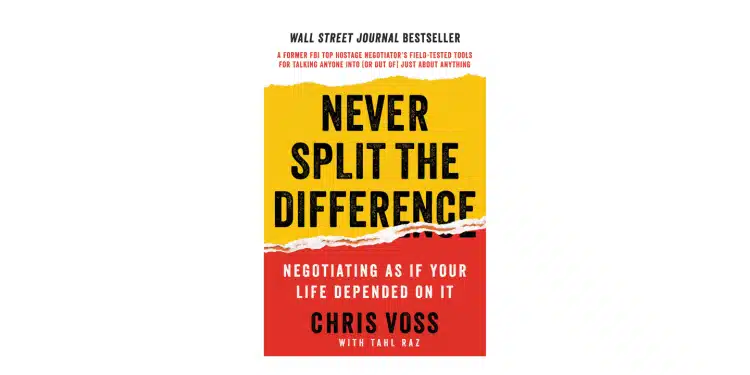Never split the difference By Chris Voss
No matter what position you cover in your business, you have to negotiate, let’s admit it. Whether you want to improve your skills in asking as much as possible or in conceding as less as possible, this book will teach you quick fail-safe techniques that will make you achieve the desired goal.
Chris Voss shares two decades of expertise as FBI International Chief Negotiator and teaches us, with real-life examples, how much negotiation is less about making another offer and more about listening, understanding the counterpart and be prepared.
This is a book that you will hardly be able to put aside. The writing style flows, and each page is a discovery of how much answers and behaviours were expected and the next move already planned.
Chris shares an endless number of techniques and examples for their application. Some of them are:
- Mirroring: how to repeat part of a question to influence the other to keep talking and share more information than they want;
- Label fear: if someone calls you and says, “Look, I know you are disappointed …” That’s a beautiful technique to lower your nervousness and put you in a listening position. Your fear/emotional status has been recognised, so you don’t need to shout it anymore through the phone.
- Accusation Audit (& silence): this goes back to preparation. Before an important negotiation, audit yourself with a colleague’s help and list every problematic question and anything that could go wrong. Be prepared to respond to any question and forecast where the discussion may lead. As the author mentions, “You fail at your highest level of preparation.”
If your negotiation is $ based, there are some great examples of getting to the number you want. Regardless if you are in a position of asking for more (budget for an event), or you need to reduce the game’s post (your lease is up for renewal!), if you follow the steps from the book, you are assured to be successful.
- Anchor: anchor your opponent on a range value and never give away a rounded number. “Notice that you can’t buy anything for $2, but you can buy a million things for $ 1.99. How does a cent change anything?”
- Show the loss on the other side: anything is better than zero, isn’t it?
- Use calibrated questions: transform “No” into “How am I supposed to do this?”. This will shift the solution’s ownership to your opponent.
Finally, you could never start your preparation without first understanding the type of person in front of you. The Autor shares some fascinating insights on how to recognise Yes. We tend to negotiate to look for an agreement, which is usually the expectation of a yes; however, this has different meanings, such as commitment, confirmation or counterfeit. Learn how to recognise a counterfeit YES and never lose in any of your future negotiations.
Analyst, Assertive or Accommodator, which type of negotiator are you and which type will you have to deal with? An excellent analysis will help you understand your style and how it affects different kind of negotiators. A misunderstanding in behaviour can affect your strategy and sabotage your activity.
I hope you will enjoy the endless tools offered by this incredible book and will challenge yourself in using them during your negotiations. I did, and I was impressed with the results; my sequence was: emotional connection, label fear & anchor.



Get involved!
Comments